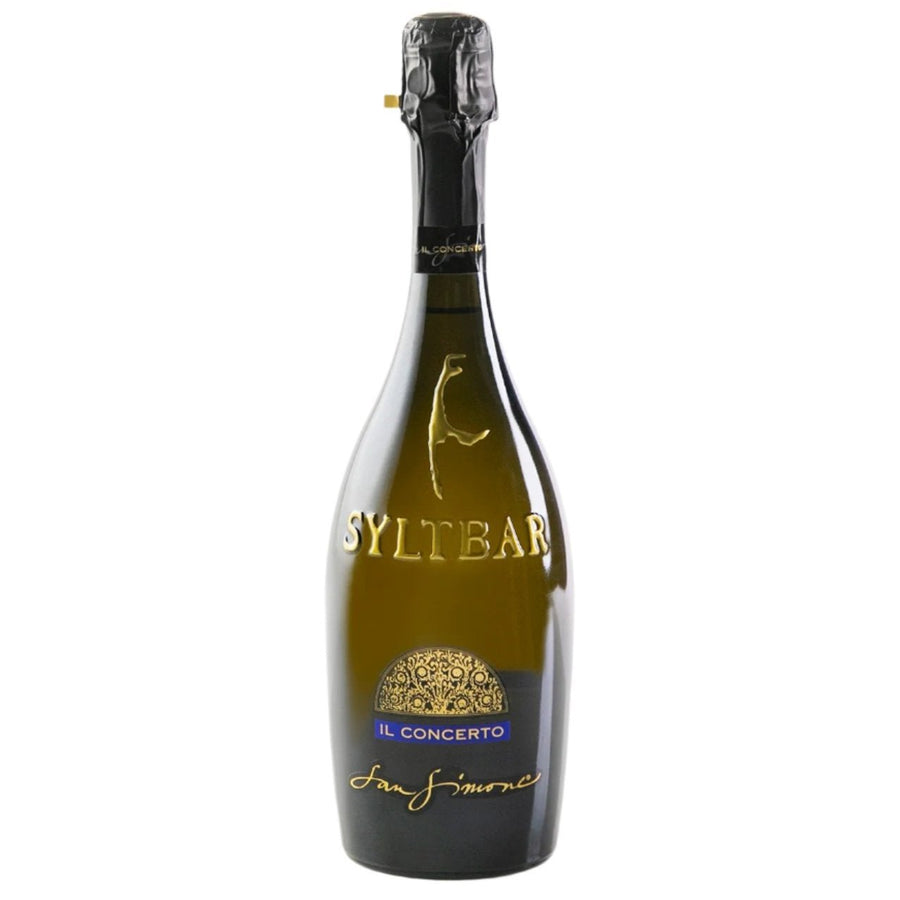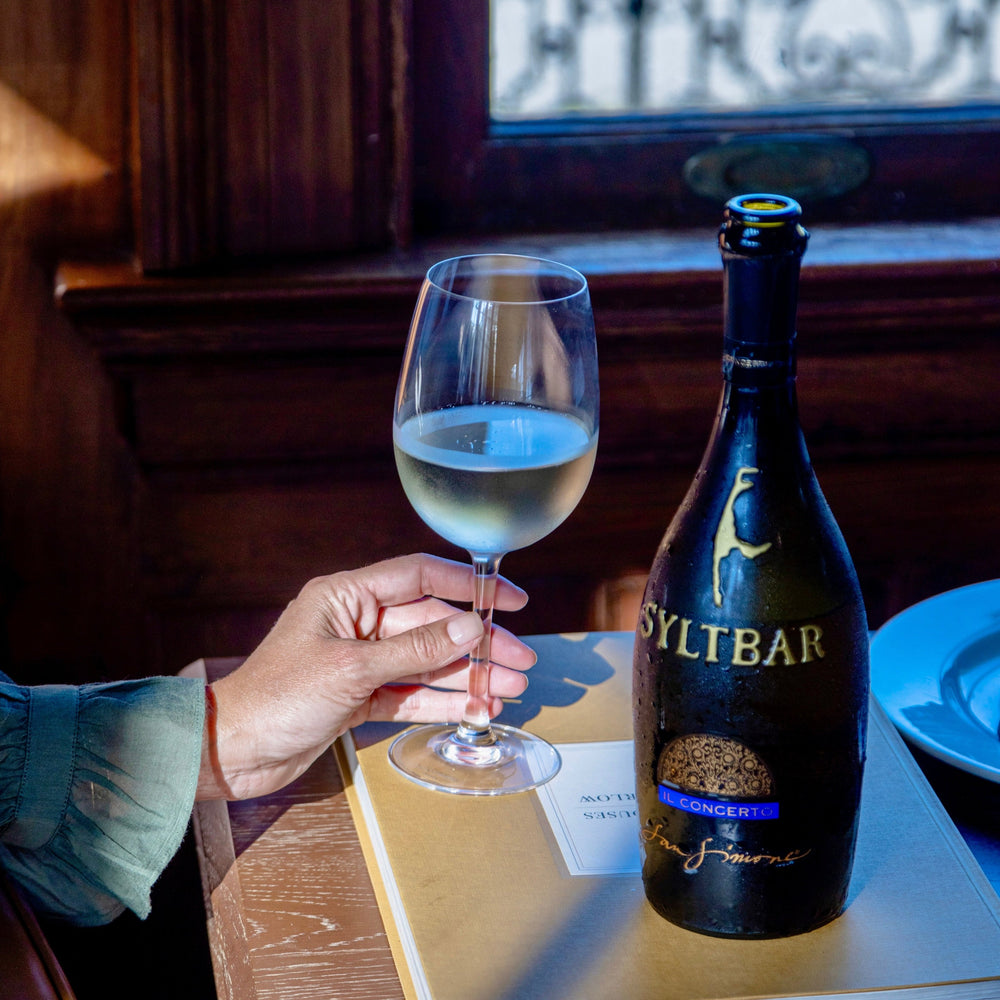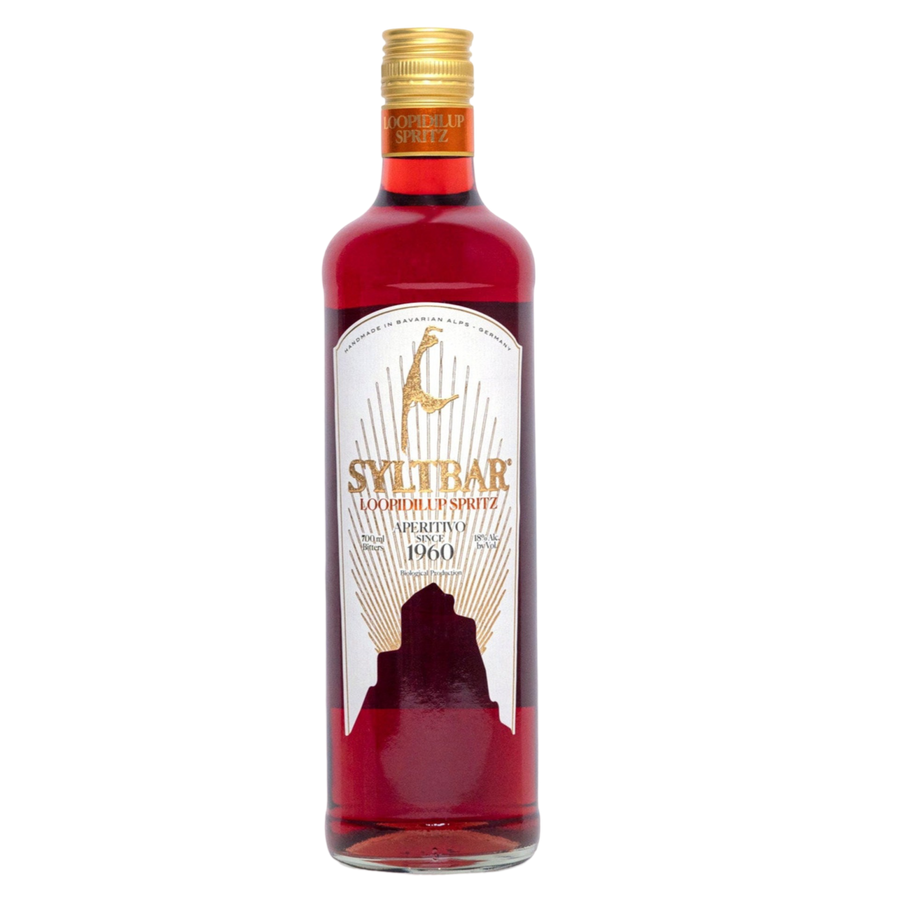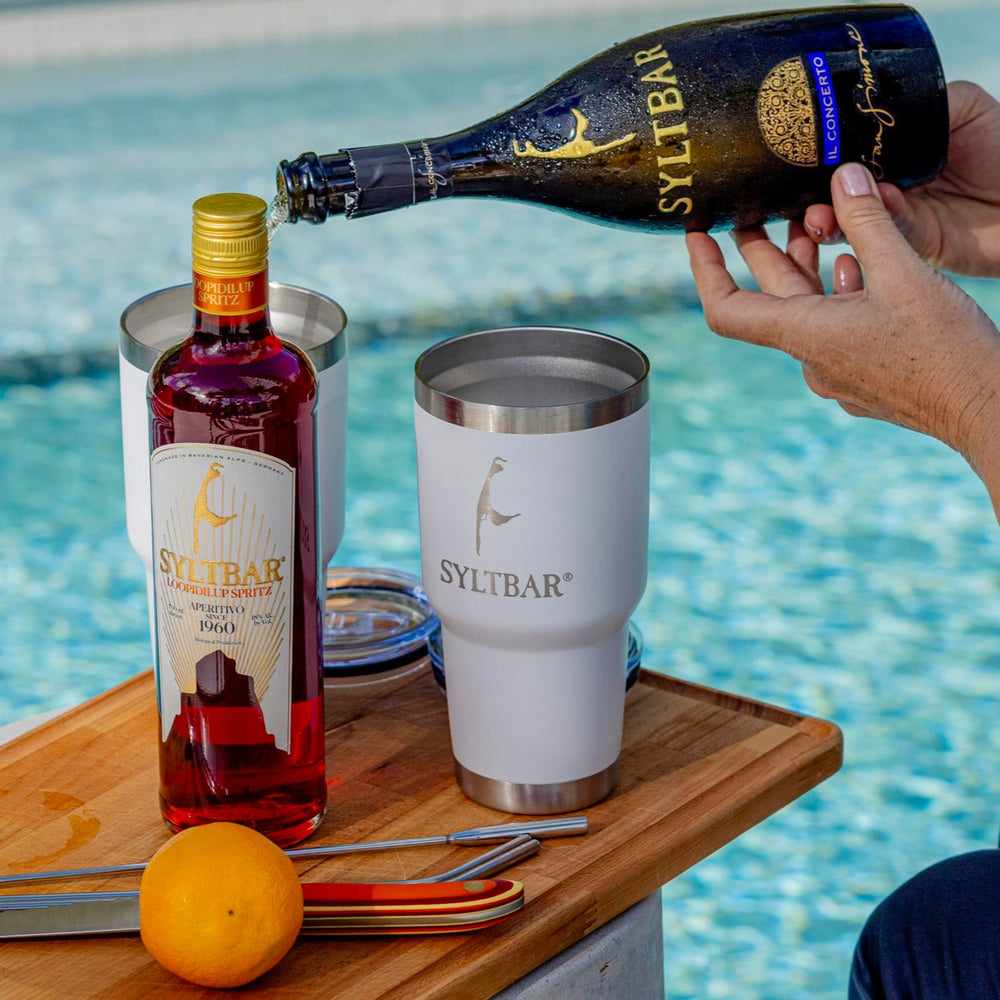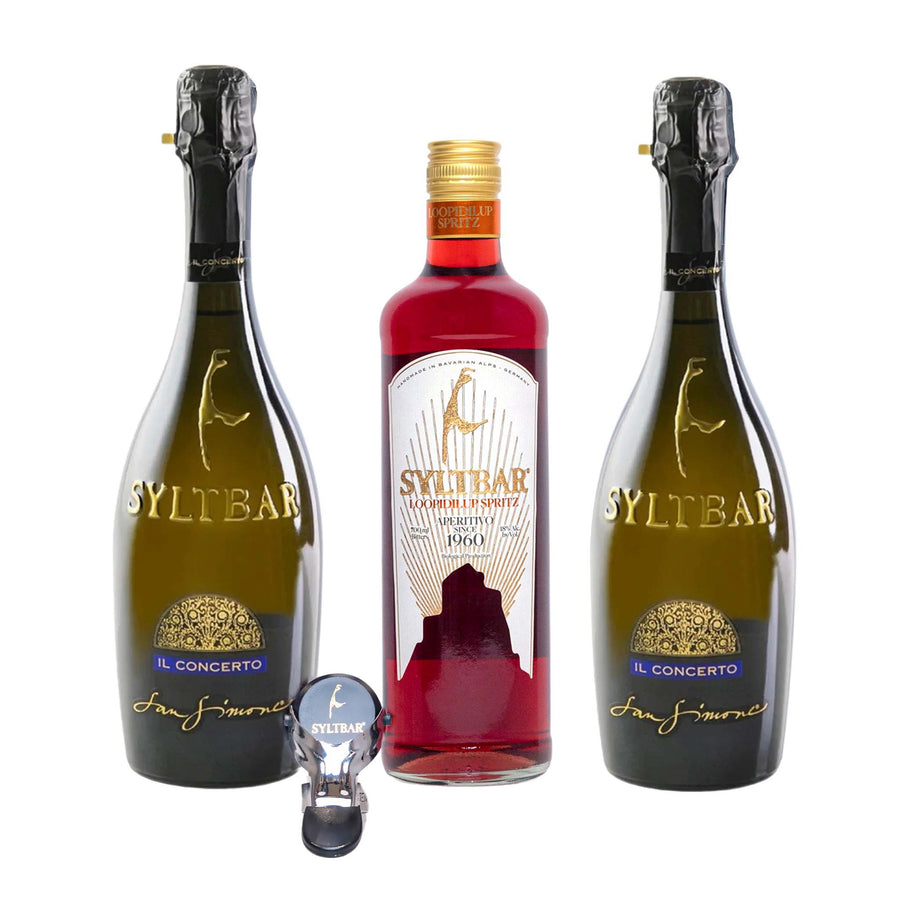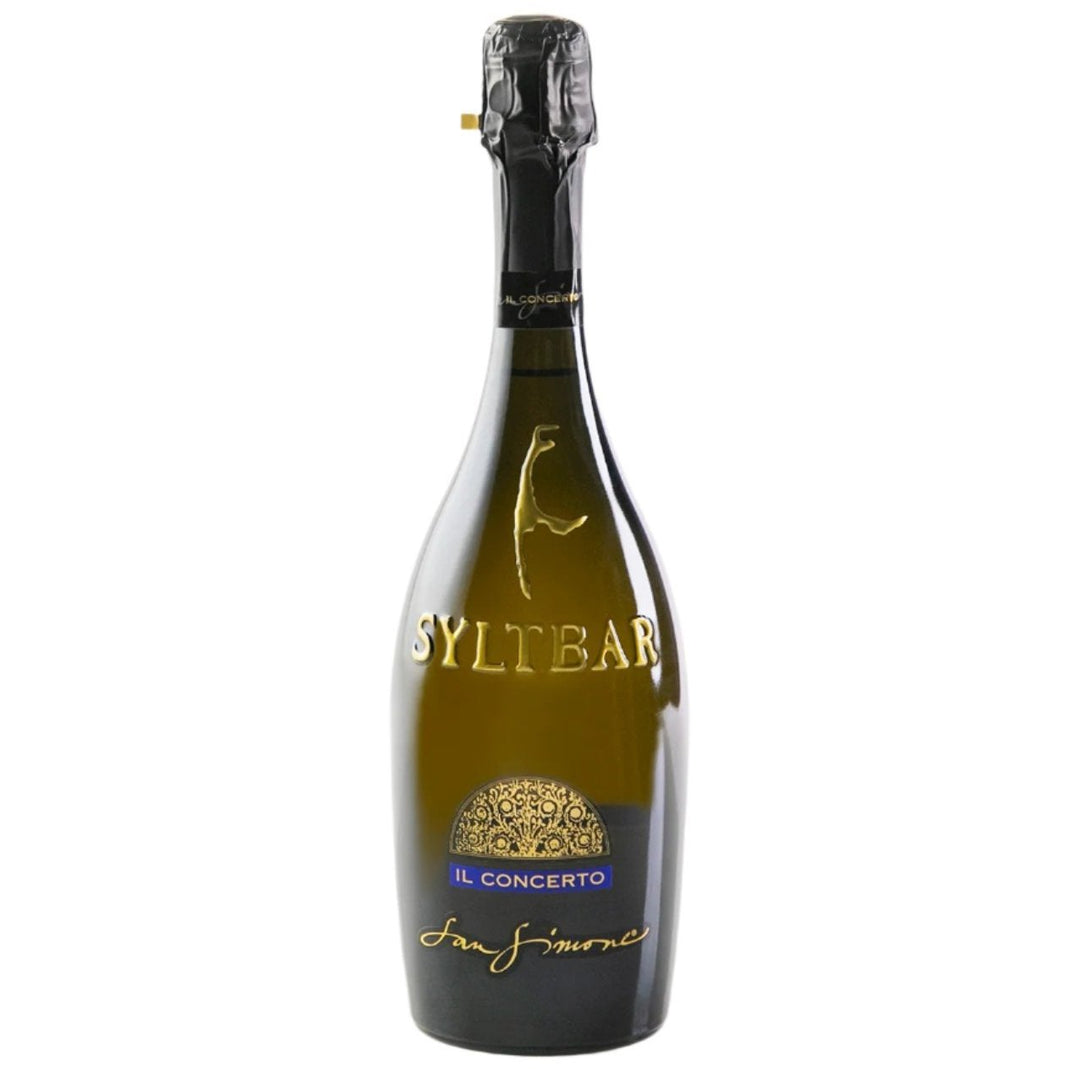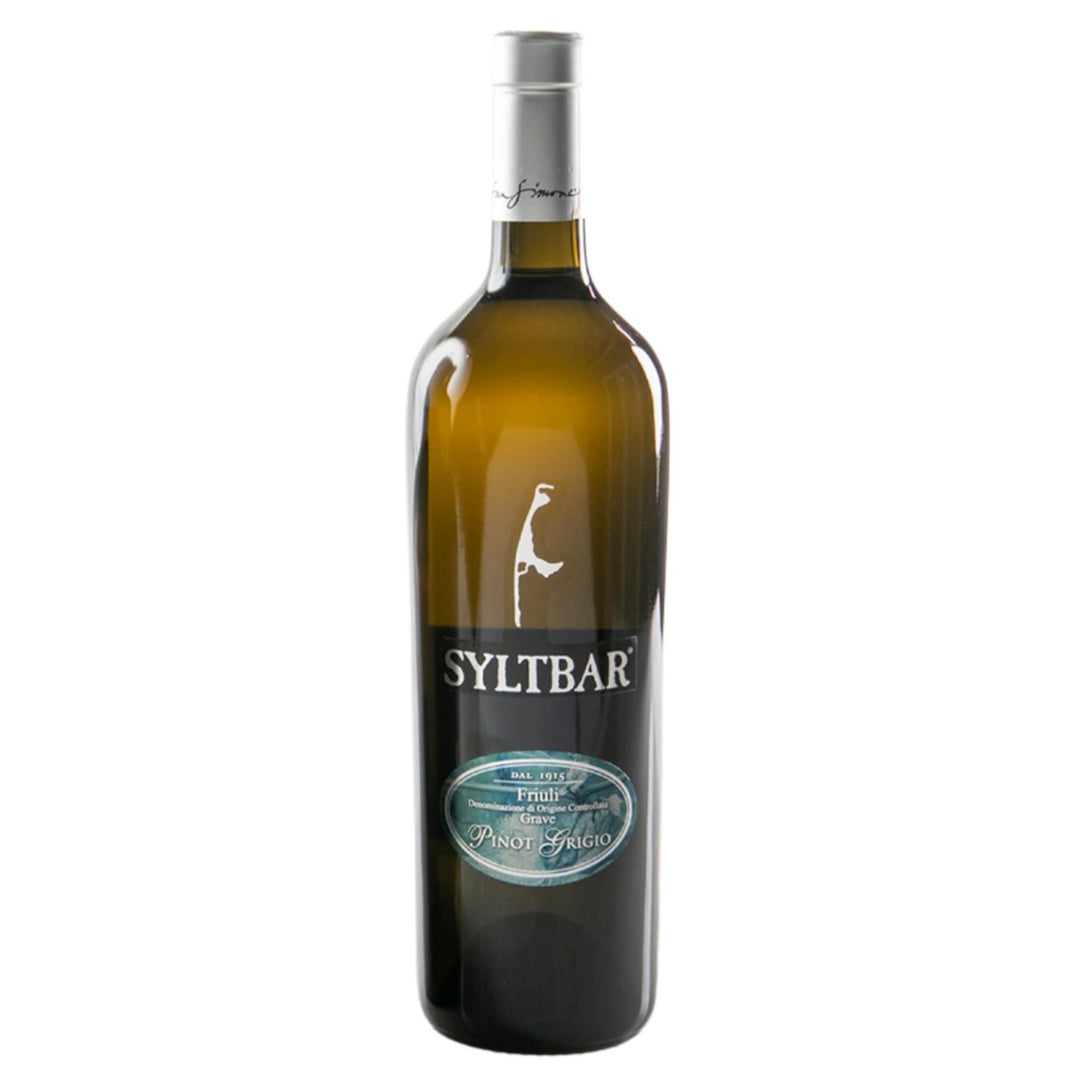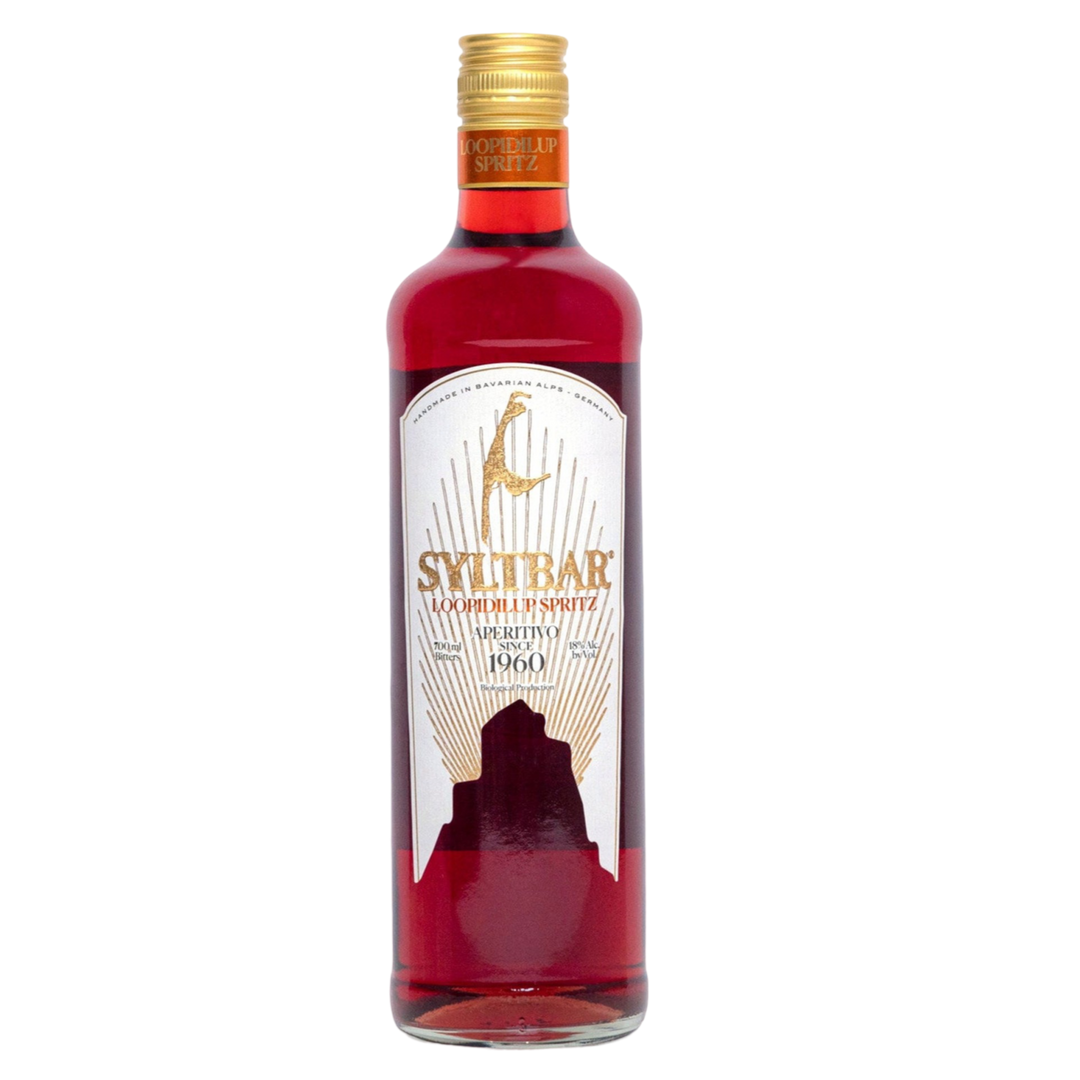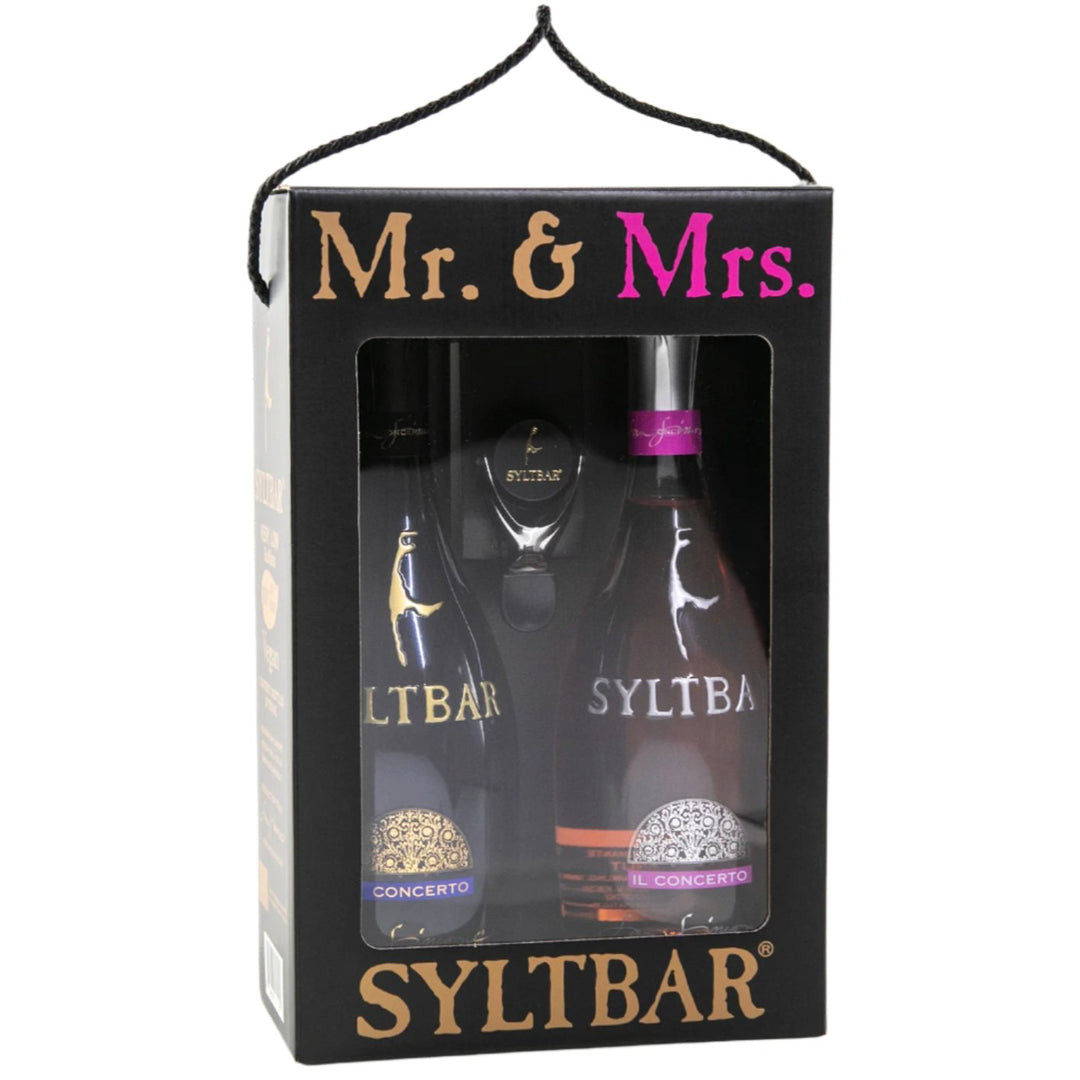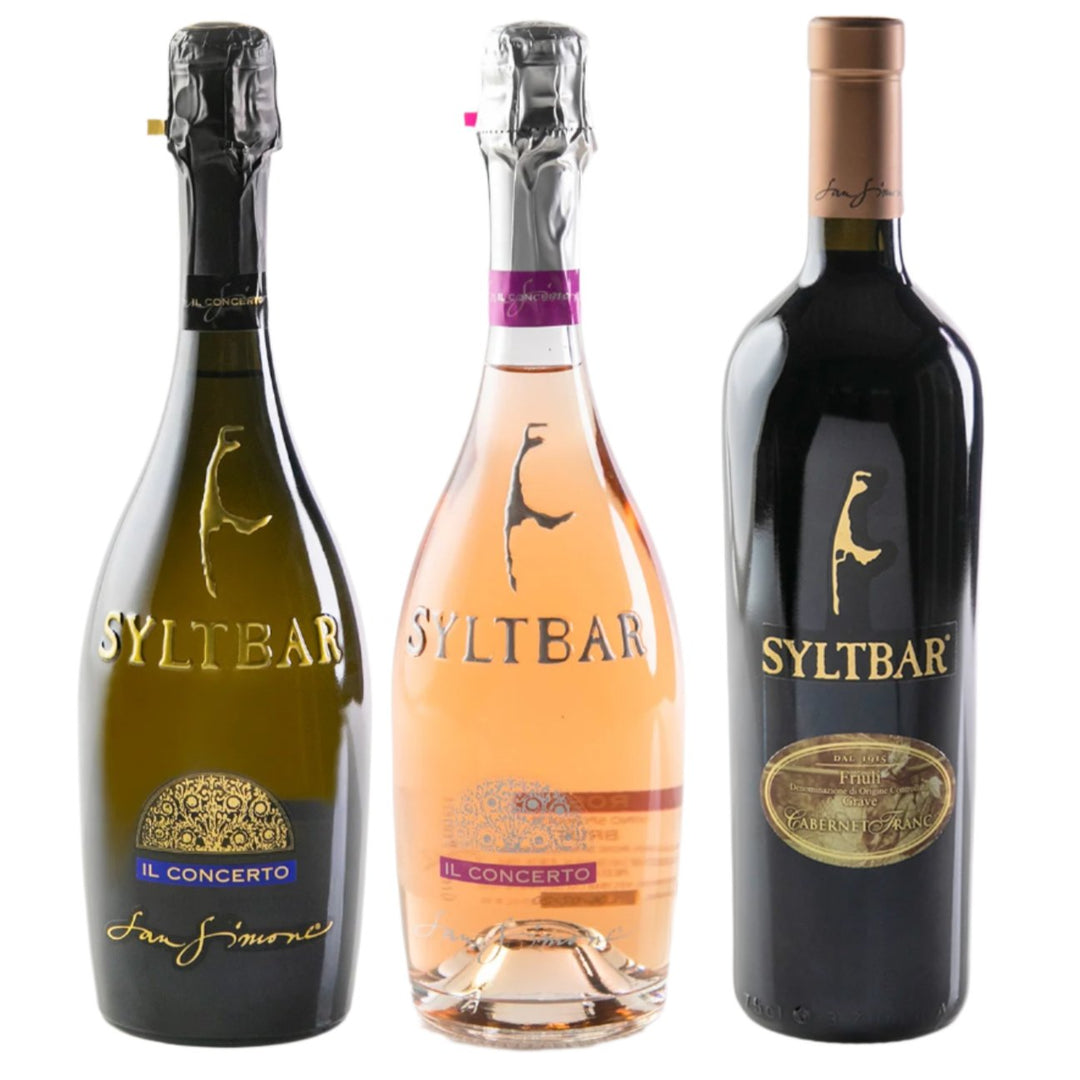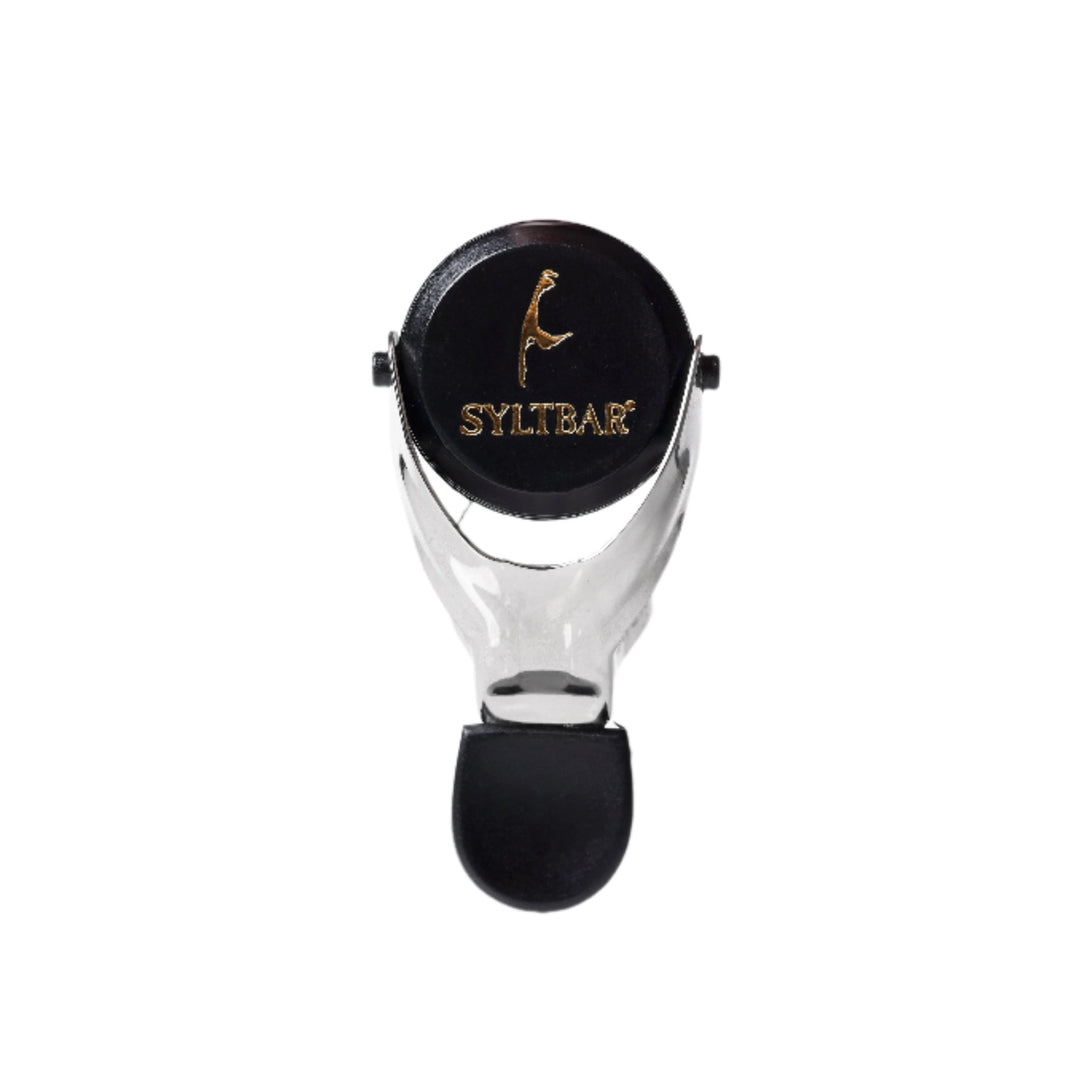Who does not like to enjoy a glass of Sparkling Wine ?
We call it an umbrella wine category which includes a lot of different variations of sparkling wines. Their differences include production method, Country of Origin, Grape variety and Taste profile. Let us today introduce you to the top sparkling wines: Champagne, French and American Sparkling, Prosecco, Cava and Sekt.
Sparkling Wine: Champagne
We start with Champagne. Only sparkling wine which is produced in the Champagne region of France can be called Champagne. It must be made from Pinot Noir ( a blanc de noirs is a Champagne made predominantly from Pinot Noir grapes ), Pinot Meunier, or Chardonnay ( blanc de blanc is made from Chardonnay ), and very often is a blend of all three grape varieties. Champagne is produced by the method “Méthode Champenoise”. This method is said to have been invented by a certain monk called Dom Perignon and refined by the widow Veuve Cliquot. These two names should be familiar to any Champagne enthusiast because they are still today two of the most famous houses in the Champagne. The method “Méthode Champenoise” involves adding more yeast and sugar to a base of wine, then bottling the wine for a second fermentation. During this process, the wine sits on the dying yeast and sediment that forms, called the lees, and the bottle is gradually tipped and spun so that all the lees collect in the neck of the bottle. The bottle is then flash-frozen, the lees are popped out, and the bottle is sealed again. Then the Champagne is used to be popped at weddings, or engagements, housewarmings or some other special occasions.
Due to the lengthy process of sitting on the lees, Champagne takes on richness and complexity and its signature biscuit or yeasty notes. And, while some styles of Champagne are crisp with notes of lemon, apples, and flint, fine champagnes frequently become bold with flavors of toasted brioche, roasted fruit, and toffee ones. We highly recommend to purchase value quality Champagne brands and NOT the Mass production ones such as Veuve Cliquot. Good examples of quality Champagnes are Krug, Billecart-Salmon, Ruinart Rose and Laurent Perrier Rose,.
Champagne Summary
- Production method: Méthode Champenoise
- Country of Origin: Champagne, France
- Grape variety: Pinot Noir
- Taste profile: Notes of lemon, apples, and flint
Sparkling Wine: Cava
Cava is Spain’s most notable and excellent contribution to the world of Sparkling Wine. It is usually made with a few grape varietals that you probably haven’t ever heard of. It is called Macabeu, Parellada, and Xarello. Some producers also use Chardonnay or Pinot grapes. Cava retail prices for the end consumer are similar to most Prosecco names but when it comes to character and production it is much more similar to Champagne. The effervescence-producing secondary fermentation happens in the bottle and not in stainless steel tanks but not in the French region and therefore the method cannot be called “Méthode champenoise” but “Méthode traditionnelle” instead. It is not a secret that cava is much more reasonably priced compared to French Champagne. The Spanish have mechanized the process of “Tirage” which stands for the rotating and tipping of the Cava bottles during the secondary fermentation. The French compared to it very often still do it by hand. The result is also that Cava is lighter in style than longer-aged Champagne brands. Cava contains balanced citrus, melon, pear including a pleasant acidity. Cava is produced in the same style as Champagne but it offers the end consumer a much better price level if one does not want to spend $ 40.00 or more for one bottle.
Cava Summary
- Production method: Méthode traditionnelle
- Country of Origin: Spain
- Grape variety: Macabeu, Parellada, and Xarello
- Taste profile: Citrus, melon, pear
American Sparkling Wines
It is not a secret that every wine-producing region produces Sparkling Wines. For example one can find a lot of American Sparkling Wines which are produced by the “Methode Traditionelle” and Chardonnay Grapes. This can be compared with a French Blanc de Blanc Sparkling Wine but other ones can be produced completely different. American sparkling wine finally starting to get the respect it has deserved for a long time. Schramsberg, under the ownership of the visionary Davies family since 1965, has been producing some of the best sparklers in America for over half a century. Oregon is coming on strong, with a good sparkling-wine culture. Gruet, in New Mexico, proves year after year that bubblesdon’t have to cost a fortune. In the End of Nowhere, in Amador County, California, is a newer producer that’s finding a growing audience and well-deserved success with their foot-tread. The single-vineyard Uncorked a dry sparkling Zinfandel represents in many ways the brave direction that American sparkling wine is heading.
American Sparkling Wine Summary
- Production method: Methode traditionnelle
- Country of Origin: USA
- Grape variety: Chardonnay
- Taste profile: Cantaloupe, white peach, and a hint of brioche and almond paste
German Sekt
Sekt is a German term for sparkling wines, which is not only produced in Germany but in Austria too. Today excellent Sekts from Germany are being imported into the U.S. and are distributed for the end consumer at Fine Wine Stores in major US wine markets. And it is the Germans who are the World’s biggest consumers of Sparkling Wine, consuming more Sparkling Wine per liter than any other people. This includes not just Sekt but Champagne, Prosecco and Cava too. The majority of produced Sekt is everyday mid quality and isn’t imported into the U.S. in significant quantities. You don’t want that $10.00 bottle of Sekt but the Premium Sekt which is about 5% of the German Sekt production. This starts at about $20.00 Retail price per bottle. This Sekt is produced by the “Méthode traditionnelle” which is also used to make Champagne. One might not get the famous toast-and-limestone flavors of Champagne, but instead delicate biscuit and brioche accents. Some fruits of Champagne and Sekt are similar: Apple, Citrus and Pear. Sekt is produced in the following German regions: Mosel, Nahe, Pfalz, Rheinhessen and Rheingau. Each of it creates its own general flavor profile. Premium Sekt is produced with Pinot Blanc, Pinot Gris and Pinot Noir. Some German also use Chardonnay grape variety. The majority of Premium Sekts are single varietals and are usually vintage dated with the produce plus the village and the vineyards. It is called “Winzersekt” which is made by a producer who has vineyards of his or her own.
German Sekt Summary
- Production method: Méthode traditionnelle
- Country of Origin: Germany, Austria
- Grape variety: Pinot Blanc, Pinot Gris and Pinot Noir
- Taste profile: Apple, Citrus and Pear
SYLTBAR Sparkling Wines
So why should one drink SYLTBAR instead of all the other Sparkling Wines such as Champagne, Cava, American Sparkling, French Sparking and Sekt ?
The answer is not that SYLTBAR is the better choice but that it is your “Happy, Healthy Daily Juice” and you do not need a special occasion to enjoy it.
SYLTBAR is not a better but a different choice. Make up your own mind about the following:
- The packaging of Mr and Mrs SYLTBAR is different
- 100% Natural production of Mr and Mrs SYLTBAR
- 49 calories per 6 oz glass for Mr and 63 calories per 6 oz glass for Mrs SYLTBAR ( Avg. calorie count by Glucose level )
- Mr SYLTBAR 100% Glera and Mrs SYLTBAR 100% Merlot Grape variety
- Mr and Mrs SYLTBAR are very low on Sulfites
- Mr and Mrs SYLTBAR are Vegan too
- Mr and Mrs SYLTBAR are certified by the Green Project which is superior compared to just being Organic
Ready to taste the SYLTBAR difference? Try both bottles of SYLTBAR Sparkling Wines in our SYLTBAR Tasting Couple
Explore more
Share this
Featured product
Featured product
It is time for SYLTBAR order now!
Join SYLTBAR mailing list
Sign up to receive delightful emails with deals, tips & more
or text CONNECT to 1-833 461-3379
MIGHT TAKE UP TO A MINUTE TO RECEIVE CODE TEXT! By texting CONNECT to us, you consent to receive marketing text messages through an automatic telephone dialing system at the number provided. Consent is not a condition to purchase. Text STOP to unsubscribe or HELP for help. Msg and data rates may apply. Read our privacy policy
SYLTBAR
Shop

*Total calories based on glucose and not by scientific testing. This statement has not been evaluated by the Food and Drug Administration. This product is not intended to diagnose, treat, cure, or prevent any disease.

